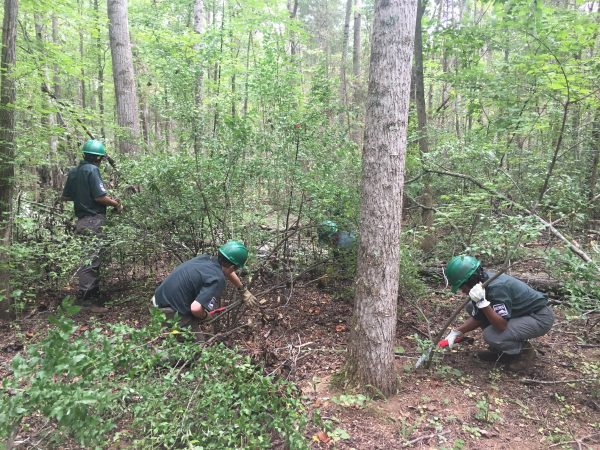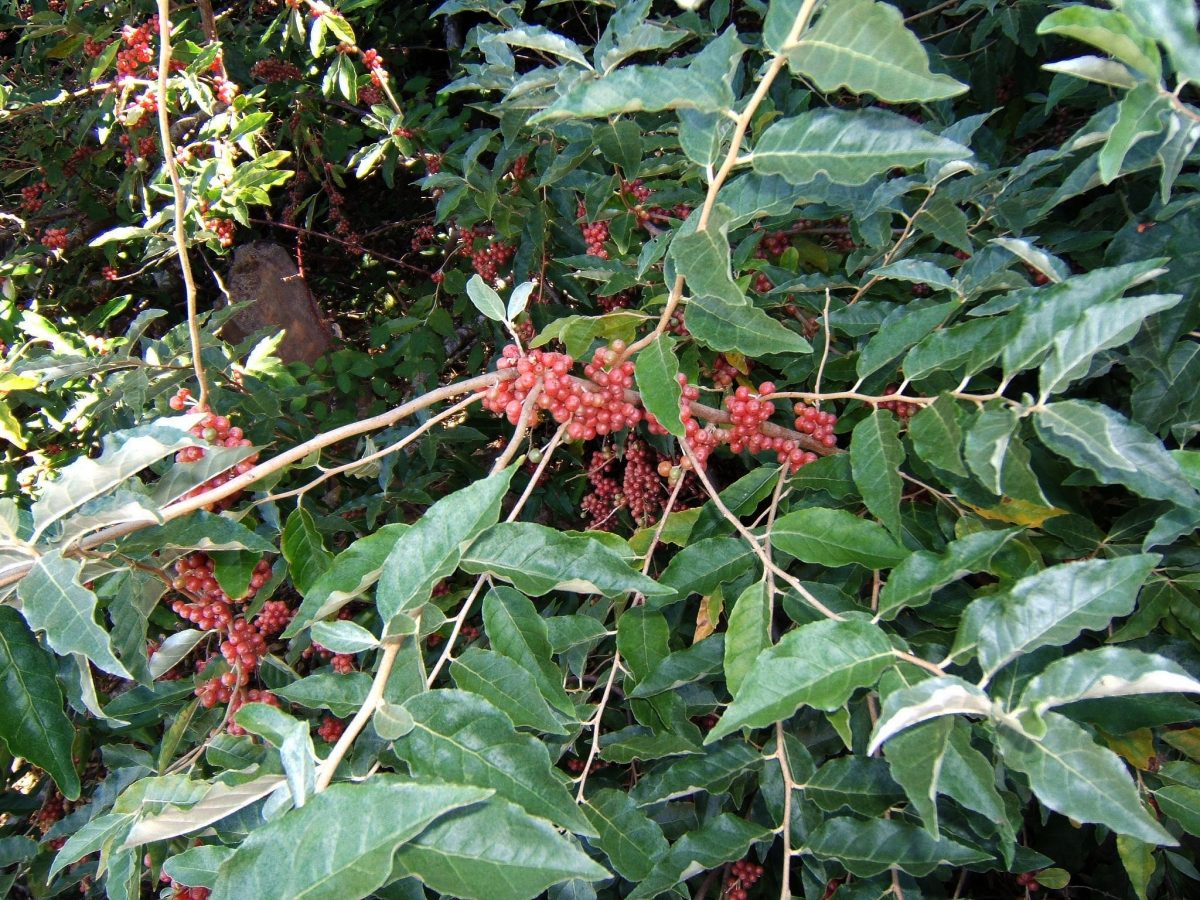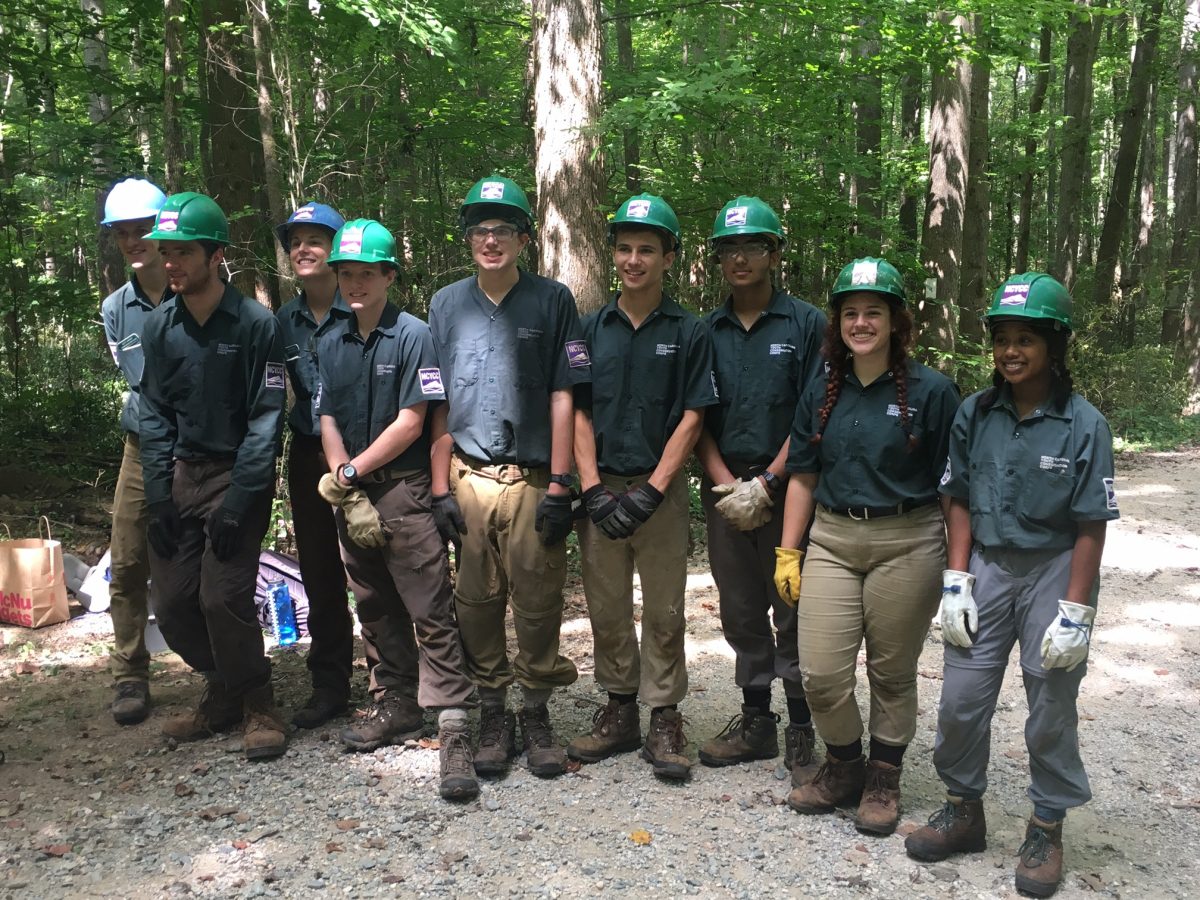Cultivating a new generation of conservation leaders

On a Friday morning in late July, Jan Pender left her home in Raleigh and headed toward the Uwharrie National Forest. (I use the term “morning” loosely – it was 3:30 a.m.) Pender, director of the N.C. Youth Conservation Corps, had allowed plenty of time to stop at McDonald’s, wait for an order of 20 biscuits, navigate the gravel roads through the Badin Recreation Area and still reach the campground by 6:30 a.m. She wanted to surprise her crew in the Uwharries with a filling breakfast before they began another day of strenuous work.
Similar youth crews built trails in the Uwharrie National Forest in the late 1970s. The Student Conservation Program was modeled after the Civilian Conservation Corps, part of the New Deal effort to put people back to work during the Great Depression. Federal funding for the student program ended abruptly in 1980. Afterward, several states funded their own programs (with additional support from private foundations), but the Southeast lagged other regions. In 2011, the Conservation Trust for North Carolina (CTNC) decided a Youth Conservation Corps program would be a great way to help cultivate the state’s next generation of conservation leaders.
For assistance, CTNC reached out to the Vermont YCC, an organization which dates to 1985. They train crew leaders, typically in their early 20s, for the daunting task of supervising and mentoring youth (ages 16-18) or young adult (ages 18-24) crews. Two leaders are assigned to each 8- to 10-person crew. These dedicated young people not only work together, they live together, camping near the work site. Most commit to a seven-week stint. (Youth crews also have the option of a three-week split session.)
|
LEARN MORE ABOUT THE N.C. YOUTH CONSERVATION CORPS Contact contact Jan Pender at jan@ctnc.org or visit www.ctnc.org/connect/ncycc/ |
The NCYCC deployed its first two crews in 2013. The program has proven so successful the number has grown to six. This summer, crews worked on projects across the state – on a variety of federal, state and local conservation lands – from maintaining trails in Linville Gorge off the Blue Ridge Parkway to building raised beds for a pollinator garden at the Everett Creek Preserve in Onslow County.
Thanks to the enthusiastic support of the late Deborah Walker in her role as district ranger, this is the second consecutive year we’ve had a seven-week crew in the Uwharrie National Forest. (Since Deborah’s untimely death last fall, Terry Savery has taken up the reins to ensure continuity.) The crews have provided thousands of hours of labor to improve the area’s non-motorized trails.
This year, the youth crew built lots of “turnpikes,” raised stretches of trail that help prevent erosion. This is physically demanding work. It involves benching trails, grubbing out roots and moving timbers and tons of gravel over challenging terrain. The Uwharrie Backcountry Horsemen were so grateful for the improvements, they provided support by helping feed the crew.
This is not a swanky summer camp. These young people sign on to do a job. They’re given ample support to help them succeed, but they are not coddled. One crew member left after the first night. Another was asked to leave for not meeting expectations. Crew members earn minimum wage, but they gain invaluable knowledge and work experience. They also have the opportunity for personal growth. They learn to function as a team and test the limits of being self-sufficient.
There’s also an educational component to the program. At the end of the workday, crew members devote an hour to writing, reading and discussion about environmental and social issues relevant to young adults, a structured curriculum referred to as WoRD.
 Autumn olive, or Eleagnus umbellata, is one of the most troublesome invasive plants. Photo: By Rmpchaves (Own work) [CC BY-SA 3.0 (http://creativecommons.org/licenses/by-sa/3.0)], via Wikimedia Commons
Autumn olive, or Eleagnus umbellata, is one of the most troublesome invasive plants. Photo: By Rmpchaves (Own work) [CC BY-SA 3.0 (http://creativecommons.org/licenses/by-sa/3.0)], via Wikimedia Commons
Another youth crew spent a week at Latta Plantation Nature Preserve in Mecklenburg County. Their project focused on invasive species removal. Last fall, park managers burned a 50-acre forested tract choked with autumn olive (Eleagnus umbellata). The fire top-killed most of the shrubs. This opened up the understory so the crew could easily move through the forest. They worked in teams of three – one cut any limbs that had survived the fire, one hauled debris to a central location and one followed in their wake, painting stumps with herbicide.
The crew was so efficient they covered the entire tract in less than four days. Matthew Harrell, a natural resources coordinator with Mecklenburg County Park and Recreation, noted that hiring an NCYCC crew can be a good value. He estimated it would take the average middle-aged park employee half a day to accomplish a task that two strong and diligent crew members could knock out in half an hour.
Crew members enjoyed breaking up the repetitive nature of invasive removal with a day of trail repair. Some joked that using a Pulaski – the heavy-weight tool of choice for firefighters – wasn’t as cool as they thought it would be. With new-found knowledge and confidence, they talked about their preference for the Hazel hoe, even though it isn’t as macho. “And sometimes,” one said, with sincere admiration, “you just can’t beat a good shovel.”
To learn more about the NCYCC, contact Jan Pender at jan@ctnc.org or go to www.ctnc.org/connect/ncycc/
 A crew from the N.C. Youth Conservation Corps takes a break from work at Latta Plantation Nature Preserve. Photo: Ruth Ann Grissom
A crew from the N.C. Youth Conservation Corps takes a break from work at Latta Plantation Nature Preserve. Photo: Ruth Ann Grissom